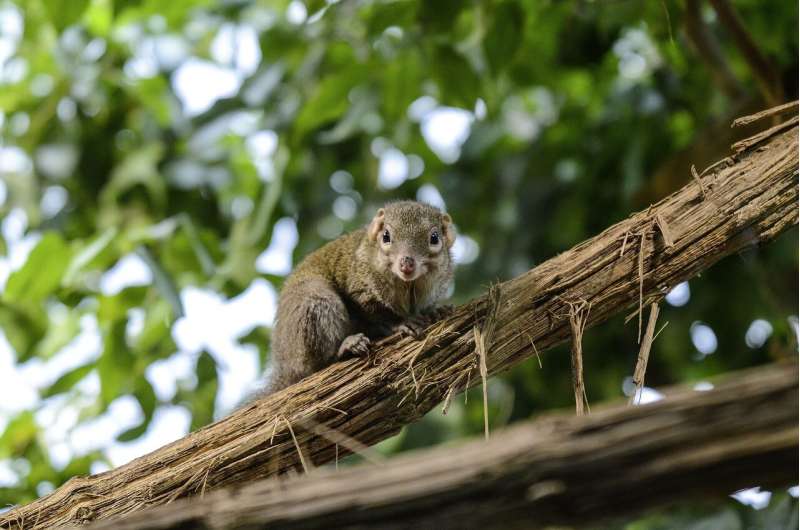Small shrew could make a big difference in dry eye research

Breakthroughs in health care can come from unusual places. Jianzhong Chen, Ph.D., assistant professor in the University of Alabama at Birmingham's School of Optometry, and his colleagues may have discovered a new one for dry eyes, a disease that is estimated to affect 26 million Americans.
In a recently published study, Chen aimed to identify the underlying mechanism causing dry eye disease with the help of the tree shrew, a non-primate mammal that is genetically similar to humans. The result was the paper "Lipidomic analysis of meibomian gland secretions from the tree shrew: Identification of candidate tear lipids critical for reducing evaporation," published in Chemistry and Physics of Lipids.
While tree shrews have been extensively studied as a model for myopia within UAB's School of Optometry for research surrounding other eye diseases like glaucoma, this is the first instance of research for dry eye disease.
Meibum lipids—oils produced by glands within the eyelid—form the outermost lipid layer of a thin tear film that covers the surface of the cornea. The tear film keeps the cornea lubricated and supports normal eye function, with the lipid layer retarding the evaporation of the tear film. However, when there is an abnormal change in the meibum lipid composition and consequently the lipid layer, tears evaporate too rapidly to keep the eye lubricated, and dry eye disease occurs.
The lipid profile of a tree shrew's meibum was found to be very similar to that of a human, which made for viable comparisons in the study of dry eye disease. Since the tree shrew has a short lifespan, it is possible to monitor meibum lipid change through their lifetime.
After studying the lipid profile of the tree shrew's meibum using a newly developed MS/MS all shotgun lipidomic method, slight differences from human meibum were detected. The differences could be related to the much lower blink frequency of tree shrews and were used to identify components potentially important for inhibiting evaporation.
Studies are ongoing to confirm the preliminary results.
More information: Jianzhong Chen et al. Lipidomic analysis of meibomian gland secretions from the tree shrew: Identification of candidate tear lipids critical for reducing evaporation, Chemistry and Physics of Lipids (2019). DOI: 10.1016/j.chemphyslip.2019.01.003
















